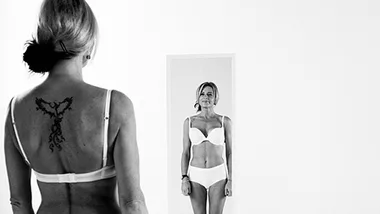Many pregnant mums today like to plan their perfect birth. This can mean different things for different women, but lots of mums strive to have an active, drug-free labour and a vaginal delivery.
After months planning and preparation through research and attending various birth classes, women enter their final weeks or pregnancy feeling empowered to bring their babies into the world without interventions.
However, sadly, despite their wishes, more often than not their birth plan doesn’t go to plan. Women giving birth in western countries are highly likely to experience medical interventions during their childbirths. From epidurals and episiotomies, to c-sections and forceps deliveries, many women are not able to achieve the joyful, active births that had hoped for.
In fact, as a result of the medical interventions these women experience traumatic births that can take many years to emotionally recover from.
One powerful initiative striving to give these women a voice is ‘Exposing The Silence Project’. The emotive photo series explores the grief and trauma that women across the U.S. have endured as a result of their birth experiences.
The project was founded by Lindsay Askins, a doula and photographer, and Cristen Pascucci, the vice-president of Improving Birth, a U.S. women’s advocacy organisation. The project was born out of their desire to give women a platform to speak out about their traumatic treatment during birth in America.
“This project is a platform for women to speak out about how they were bullied, coerced, manipulated and even abused during their pregnancies and births,” founder Lindsay Askins told Mother and Baby.
“I hope there are women out there that read this and see these women and know they are not alone in how they feel and what they experienced. And, in turn, care providers are made aware of how they treat their pregnant clients has a direct effect on their practice,” she added.
The project features 49 striking, black and white photographs of mothers who have had traumatic births. Each photograph has a detailed caption that gives every woman featured in the project the platform to speak about her negative birth experience.
Staci, San Diego: “My birth experience could have been far less traumatic if the hospital staff would have listened to me and trusted that I know when something is not right with my body.”
“For most women, this conversation never happens,” Askins told Mother & Baby.
“Why aren’t doctors and midwives asking women, ‘How do you feel your baby’s birth went?’ and then giving women the time to actually fully answer that question or maybe ask some questions themselves?”
“Instead, that visit is mostly centred on the physical state of the woman, not her emotional or mental health.” Askins explained.
Unfortunately in many cases, women who do try to express their grief or trauma surrounding their births often hear well-intentioned, yet dismissive comments like, “But a healthy mum and a healthy baby is the best outcome.”
Askins explained to Mother & Baby that comments like that are “incredibly invalidating to the woman it is directed towards.”
“‘Healthy’ does not only pertain to physical health, but emotional and mental health as well,” explained Askins.
“A woman who is not emotionally or mentally well is unable to properly care for a brand new baby no matter how ‘healthy’ that newborn may be,” she said.
“Furthermore, how do we know that babies entering the world through a traumatic birth are not ‘unhealthy’? They have experienced as much trauma as their mother, if not more,” Askins expressed to Mother & Baby.
Askins suggests that a change in perspective is required for the way pregnant and birthing mothers are regarded by medical professionals. She believes more respect and dignity should be given to labouring mums, as well as more consideration for their own intuition and knowledge.
“There needs to be an agreement that care providers and women are on the same team, working together towards the same goal. There is too much division the way the system is set up now. And little-to-no regard to the women’s desires, wishes or demands,” she said.
See a selection of the women’s stories from the Exposing The Silence Project below:
For more about this project visit their Facebook page and Instagram account or see the full gallery on the Exposing the Silence Project website.


